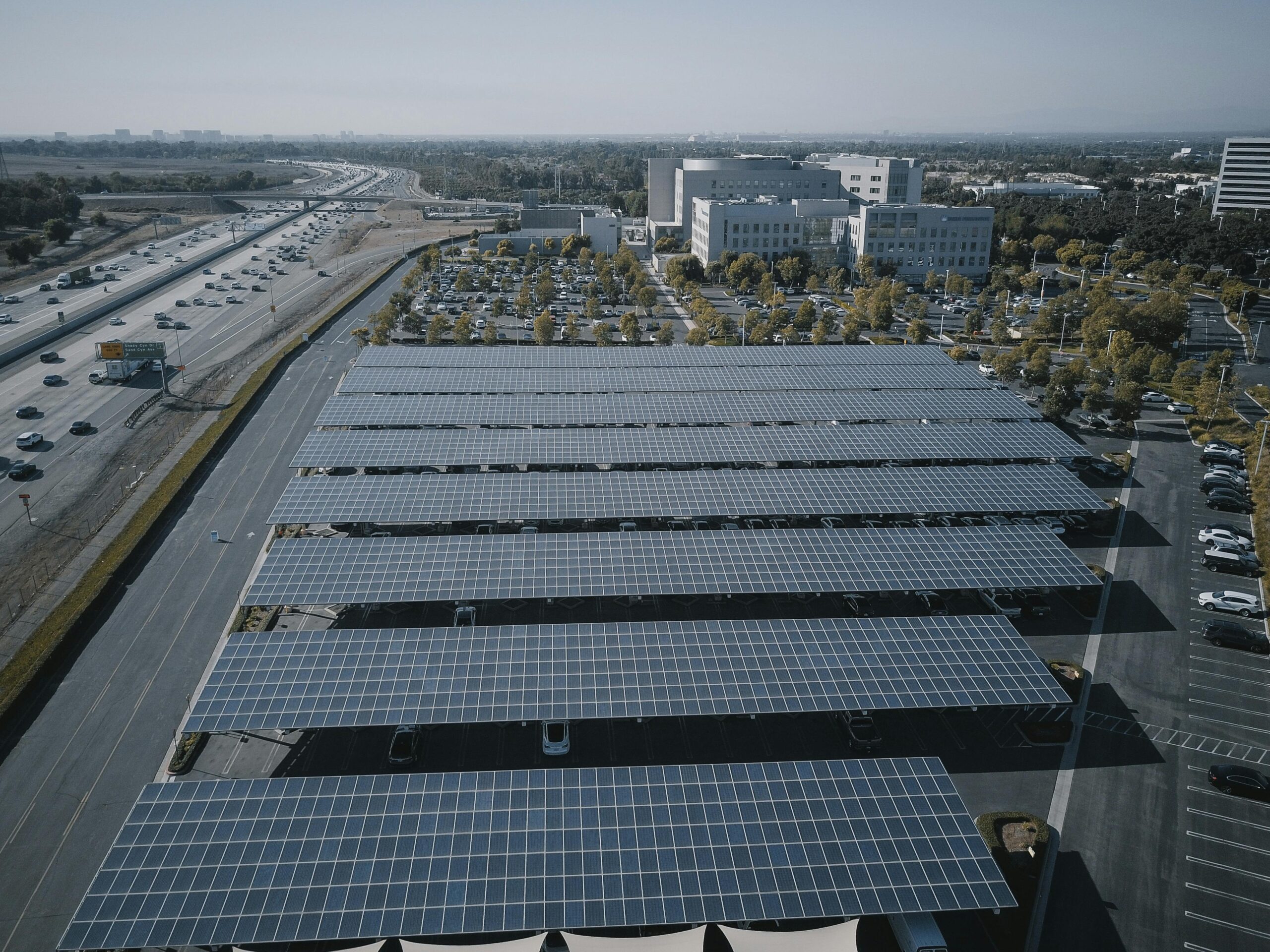Sustainable living is no longer a distant dream but a tangible reality taking shape in eco-neighborhoods worldwide, transforming how we build communities.
As climate change intensifies and urban populations swell, the need for environmentally conscious urban planning has never been more urgent. Eco-neighborhoods represent a revolutionary approach to community development, integrating renewable energy, green spaces, waste reduction, and social cohesion into cohesive living environments. These sustainable communities are not just about reducing carbon footprints—they’re about creating healthier, more connected, and resilient places where people thrive alongside nature.
The concept of eco-neighborhoods challenges conventional urban development by prioritizing environmental stewardship, economic viability, and social equity. From Scandinavia’s pioneering projects to emerging initiatives in Asia and Latin America, these green communities demonstrate that sustainable living can be both practical and desirable. This comprehensive exploration reveals the essential components, innovative strategies, and transformative potential of eco-neighborhood planning for our collective future.
🌱 The Foundation: Understanding Eco-Neighborhood Principles
Eco-neighborhoods are intentionally designed communities that minimize environmental impact while maximizing quality of life. Unlike traditional developments that often prioritize economic returns over ecological considerations, these sustainable enclaves integrate environmental principles into every planning decision, from site selection to building materials, transportation networks to waste management systems.
The core philosophy underlying eco-neighborhood design revolves around three interconnected pillars: environmental sustainability, social vitality, and economic resilience. Environmental sustainability encompasses energy efficiency, renewable resources, biodiversity preservation, and circular economy principles. Social vitality focuses on creating inclusive spaces that foster community engagement, cultural diversity, and healthy lifestyles. Economic resilience ensures long-term financial viability through reduced operational costs, local employment opportunities, and property value stability.
Successful eco-neighborhoods operate as living laboratories, constantly evolving and adapting based on resident feedback and environmental performance data. They demonstrate that sustainability isn’t about sacrifice—it’s about intelligent design that enhances everyday life while protecting planetary resources for future generations.
Energy Independence: Powering Communities Sustainably ☀️
Energy systems form the backbone of any eco-neighborhood, with renewable sources replacing fossil fuel dependency. Solar panels adorning rooftops, wind turbines on community perimeters, and geothermal systems beneath streets transform these neighborhoods into power-generating ecosystems rather than energy-consuming liabilities.
District heating and cooling networks represent particularly innovative solutions, distributing thermal energy efficiently across multiple buildings from centralized renewable sources. This approach reduces individual heating costs by up to 40% compared to conventional systems while dramatically lowering greenhouse gas emissions. Smart grid technology enables real-time energy monitoring, allowing residents to track consumption patterns and adjust behaviors accordingly.
Energy storage solutions, including large-scale battery systems and thermal storage tanks, address the intermittency challenge inherent in renewable generation. During peak production periods, excess energy gets stored for use during high-demand times or low-generation periods, ensuring consistent power availability without fossil fuel backup systems.
Many eco-neighborhoods achieve net-zero or even net-positive energy status, producing more renewable energy than they consume annually. This energy surplus can be fed back into municipal grids, generating revenue for community maintenance while accelerating regional decarbonization efforts.
Green Architecture: Buildings That Breathe
The physical structures within eco-neighborhoods embody sustainable design principles from foundation to rooftop. Green building certifications like LEED, BREEAM, and Passive House standards guide construction processes, ensuring optimal energy performance, material sustainability, and occupant health.
Passive design strategies minimize mechanical heating and cooling requirements through strategic building orientation, high-performance insulation, triple-glazed windows, and thermal mass integration. These techniques reduce energy consumption by 60-80% compared to conventional buildings while maintaining superior comfort levels throughout seasonal variations.
Material selection prioritizes locally sourced, recycled, and rapidly renewable resources. Timber from sustainably managed forests, recycled steel, low-carbon concrete alternatives, and natural insulation materials like sheep’s wool or hemp reduce embodied carbon—the greenhouse gases emitted during material extraction, manufacturing, and transportation.
Living walls and green roofs transform building exteriors into vertical ecosystems that provide insulation, manage stormwater, support biodiversity, and improve air quality. These biophilic design elements reconnect urban dwellers with nature while delivering measurable environmental benefits, including reducing urban heat island effects by up to 5°C in summer months.
🚴 Mobility Revolution: Reimagining Transportation Networks
Eco-neighborhoods fundamentally reshape transportation patterns by prioritizing walking, cycling, and public transit over private vehicle use. Street designs favor pedestrians and cyclists, with dedicated protected lanes, traffic-calmed zones, and car-free areas creating safe, pleasant environments for active mobility.
Strategic location near public transportation hubs ensures residents can access employment, education, and cultural amenities without car dependency. Some developments incorporate micro-transit solutions—electric shuttle services connecting neighborhoods to transit stations—bridging last-mile gaps that often discourage public transport use.
Car-sharing programs and electric vehicle charging infrastructure accommodate occasional vehicle needs without requiring individual ownership. Studies show residents in well-designed eco-neighborhoods own 30-50% fewer private vehicles than comparable conventional communities, reducing household transportation costs while freeing valuable land from parking requirements for parks and community spaces.
Cycling infrastructure extends beyond basic bike lanes to include secure storage facilities, repair stations, and bicycle-sharing systems. These amenities make cycling practical for daily errands, school runs, and commuting, with some eco-neighborhoods reporting cycling mode shares exceeding 40% of all trips.
Water Wisdom: Sustainable Hydrology Systems 💧
Water management in eco-neighborhoods employs integrated approaches that treat this precious resource as both scarce and valuable. Rainwater harvesting systems capture precipitation from roofs and paved surfaces, storing it for irrigation, toilet flushing, and washing machines—applications that don’t require potable water quality.
Greywater recycling systems treat water from showers, sinks, and laundry for reuse in landscape irrigation and toilet flushing, reducing freshwater consumption by up to 40%. Advanced treatment technologies ensure recycled water meets appropriate quality standards while minimizing energy inputs.
Permeable surfaces throughout eco-neighborhoods allow rainwater to infiltrate naturally rather than overwhelming stormwater systems. Bioswales, rain gardens, and constructed wetlands provide natural filtration while creating attractive landscape features that support native plants and wildlife.
Water-efficient fixtures—low-flow toilets, aerated faucets, and efficient appliances—further reduce consumption without compromising functionality. When combined with behavioral awareness programs, these technologies can decrease per-capita water use by 50% compared to conventional developments.
Waste Not, Want Not: Circular Economy in Practice
Eco-neighborhoods embrace circular economy principles, viewing waste as a design flaw rather than an inevitable byproduct. Comprehensive sorting facilities enable residents to separate materials into multiple streams—organic waste, recyclables, textiles, electronics, and construction materials—maximizing recovery and reuse potential.
On-site composting systems transform organic waste into nutrient-rich soil amendments for community gardens, completing the nutrient cycle locally. Some neighborhoods incorporate anaerobic digestion facilities that convert food waste into biogas for cooking or heating, extracting maximum value from materials that would otherwise generate methane in landfills.
Repair cafés, tool libraries, and sharing platforms embedded within eco-neighborhoods extend product lifecycles and reduce consumption. These community resources acknowledge that sustainability requires not just better technology but also cultural shifts toward valuing durability, repairability, and shared access over disposable convenience.
Construction waste management protocols established during neighborhood development set precedents for ongoing renovation projects, with targets often exceeding 90% diversion from landfills through salvage, recycling, and creative reuse strategies.
🌳 Biodiversity Corridors: Nature as Neighbor
Rather than viewing development and nature as opposing forces, eco-neighborhoods integrate biodiversity conservation into their spatial frameworks. Green corridors connecting parks, gardens, and natural areas enable wildlife movement while providing recreational pathways for residents.
Native plant landscaping supports local pollinators, birds, and beneficial insects while requiring minimal irrigation and maintenance compared to conventional ornamental species. These plantings create seasonal beauty while delivering ecological services including pest control, pollination, and soil health enhancement.
Retention of mature trees and natural habitat features during construction preserves existing ecosystems rather than clearing sites completely for redevelopment. Where possible, brownfield remediation and adaptive reuse of previously developed land protects undisturbed natural areas from urban sprawl.
Community gardens and urban agriculture spaces foster connections between residents and food systems while increasing local food security. These productive landscapes demonstrate that sustainability includes understanding where food originates and the resources required for its production.
Social Fabric: Weaving Community Connections
Physical infrastructure alone cannot create sustainable communities—social dimensions prove equally critical. Eco-neighborhoods intentionally design spaces that encourage interaction: shared courtyards, community centers, co-working spaces, and gathering areas where neighbors naturally encounter one another.
Mixed-income housing policies ensure economic diversity, preventing the socioeconomic segregation that undermines community resilience. When people from various backgrounds share spaces, mutual understanding increases and communities become more adaptable to changing circumstances.
Participatory planning processes involve future residents in design decisions, fostering ownership and ensuring developments reflect actual community needs rather than planner assumptions. This engagement continues post-construction through resident associations managing shared resources and organizing community activities.
Educational programs help residents maximize their neighborhood’s sustainable features, from properly operating ventilation systems to participating in waste reduction initiatives. This knowledge transfer transforms passive consumers into active sustainability practitioners.
📊 Measuring Success: Performance Metrics That Matter
Eco-neighborhoods require robust monitoring systems to verify they deliver promised environmental and social benefits. Key performance indicators track energy consumption, water use, waste generation, transportation patterns, biodiversity indices, and resident satisfaction across time.
| Performance Category | Typical Target | Measurement Method |
|---|---|---|
| Energy Consumption | 50-80% reduction vs. baseline | Smart meters, annual audits |
| Renewable Energy Generation | Net-zero or positive | Production monitoring systems |
| Water Use | 40-50% reduction | Sub-metering, consumption tracking |
| Waste Diversion | 70-90% from landfill | Sorting facility data |
| Active Transportation | 60%+ of trips by walking/cycling/transit | Resident surveys, traffic counts |
| Carbon Emissions | 80-100% reduction | Lifecycle assessment models |
Transparent reporting of performance data builds trust and accountability while providing valuable insights for future projects. When neighborhoods fall short of targets, adaptive management strategies identify problems and implement corrective measures, treating sustainability as a continuous improvement journey rather than a fixed destination.
Global Inspiration: Learning From Pioneer Projects 🌍
BedZED in London pioneered eco-neighborhood concepts in the early 2000s, demonstrating that sustainable community development was achievable at scale. Its success inspired countless subsequent projects, each refining and advancing the model.
Vauban in Freiburg, Germany, transformed a former military site into a thriving car-optional neighborhood where 70% of residents don’t own vehicles. Its success proves that convenient alternatives can shift transportation culture dramatically when properly implemented.
Hammarby Sjöstad in Stockholm integrated industrial ecology principles, where waste from one system becomes input for another—wastewater generates biogas, combustible waste produces district heating, and organic matter returns to agriculture. This circular approach reduced environmental impact by 40% compared to equivalent conventional developments.
Masdar City in Abu Dhabi tackles sustainability challenges in extreme climates, employing passive cooling strategies, solar energy, and water conservation techniques suited to desert environments. Though still developing, it demonstrates that sustainable principles adapt to diverse geographic and cultural contexts.
These pioneer projects provide blueprints while acknowledging that each eco-neighborhood must respond to its unique context—climate, culture, regulations, and community needs—rather than applying cookie-cutter solutions universally.
Overcoming Obstacles: Addressing Implementation Challenges
Despite their promise, eco-neighborhoods face significant barriers to widespread adoption. Higher upfront development costs, typically 5-15% above conventional construction, deter risk-averse developers and financially constrained municipalities, even though lifecycle costs prove substantially lower.
Regulatory frameworks designed for conventional development often complicate innovative approaches. Zoning codes, building standards, and approval processes require updating to accommodate integrated sustainable design rather than treating each component as an exception requiring special permission.
Financing mechanisms rarely account for the long-term value of reduced operational costs, environmental benefits, and health improvements. Green mortgages, sustainability-linked bonds, and impact investment vehicles are emerging but remain underdeveloped relative to conventional real estate finance.
Cultural resistance sometimes surfaces when sustainable approaches challenge familiar patterns—dense development instead of sprawl, shared resources instead of individual ownership, behavioral changes supporting environmental goals. Overcoming these mindsets requires demonstration that sustainable living enhances rather than diminishes quality of life.
Addressing these challenges demands coordinated action from policymakers, developers, financiers, and communities, recognizing that short-term inconveniences yield long-term benefits for environment, economy, and society.
🔮 The Path Forward: Scaling Sustainable Communities
Transitioning from demonstration projects to mainstream practice requires systematic change across multiple sectors. Policy incentives—tax credits, expedited permitting, density bonuses—can offset higher initial costs while signaling governmental commitment to sustainable development.
Professional education ensuring architects, engineers, and planners understand integrated sustainable design principles enables quality implementation rather than superficial “greenwashing.” Certification programs and continuing education requirements can accelerate knowledge dissemination across industries.
Public awareness campaigns highlighting eco-neighborhood benefits—reduced living costs, healthier environments, stronger communities—can increase demand, motivating developers to supply sustainable options. When consumers actively seek these communities, market forces accelerate their proliferation.
Technology continues advancing, making sustainable solutions increasingly affordable and effective. Falling renewable energy costs, improved battery storage, smart home systems, and innovative materials steadily reduce barriers to eco-neighborhood development.
Regional planning frameworks that prioritize compact, transit-oriented development over sprawl create conditions favoring eco-neighborhoods. When sustainability principles guide metropolitan growth strategies, individual projects align with broader environmental objectives.

Living the Green Dream: Your Role in Sustainable Communities 🏡
Whether you’re a prospective resident, developer, policymaker, or concerned citizen, opportunities exist to advance eco-neighborhood development. Prospective residents can prioritize sustainable communities when choosing homes, accepting that they may differ from conventional neighborhoods in exchange for environmental and social benefits.
Developers willing to innovate beyond conventional practices can differentiate themselves in increasingly sustainability-conscious markets while contributing meaningfully to climate solutions. Early adopters often become industry leaders as markets mature and regulations tighten.
Policymakers hold significant power to enable or obstruct sustainable development through regulations, incentives, and public investments. Supporting zoning reforms, infrastructure investments prioritizing sustainable transportation, and building code updates facilitates eco-neighborhood proliferation.
Community members can advocate for sustainable development principles in local planning processes, attend public hearings, join sustainability committees, and demonstrate demand for environmentally responsible growth patterns.
The transformation toward sustainable communities requires collective action across society. Eco-neighborhoods provide tangible models demonstrating that environmental responsibility, economic vitality, and social well-being can coexist—indeed, that they reinforce one another when thoughtfully integrated through intentional design.
As climate urgency intensifies and urbanization continues, eco-neighborhoods evolve from pioneering experiments to essential blueprints for human settlement. They prove that green dreams can become concrete realities, offering pathways toward futures where communities thrive within planetary boundaries. The question isn’t whether sustainable neighborhoods are possible—pioneer projects definitively answer yes—but rather how quickly we can scale these approaches, making sustainable living the norm rather than the exception. Our collective future depends substantially on answering that question through committed action today.
Toni Santos is an urban innovation writer and researcher dedicated to exploring how technology, sustainability, and design are reshaping the cities of tomorrow. With a deep interest in smart infrastructure and human-centered development, Toni studies how data-driven systems and green technologies can create more livable, resilient, and efficient urban environments. Fascinated by sustainable architecture, IoT integration, and next-generation mobility, Toni’s work connects environmental awareness with digital transformation. Through research and storytelling, he examines how intelligent planning and renewable innovation can redefine the relationship between people and their cities. Blending urban design, environmental science, and systems thinking, Toni documents the breakthroughs that are reimagining how we build, move, and coexist. His work highlights the architects, engineers, and technologists leading the charge toward smarter, greener futures. His work is a tribute to: Green architecture as the foundation for sustainable living IoT innovation shaping the infrastructure of connected cities Mobility systems and renewable energy driving urban transformation Whether you’re an architect, engineer, or city planner, Toni Santos invites you to explore the technologies and ideas building the smart, sustainable cities of the future — one street, one system, one vision at a time.




